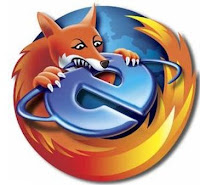
With the announcement of
Apples's 3G iphone on June 9, finally all the rumors and speculations came to an end. Steve Jobs, CEO of Apple, confirmed the iPhone 3G will hit the stores in the US and over 70 other countries on July 11th. It will costs $199 for the 8GB version and $299 for the 16GB one.
Let's take a look at the design, GPS and the new features like MobileMe.
Design
The 3G iPhone is slightly thinner at the edges than its predecessor. It weighs just the slightest bit less. All other measurements are almost same. The removal of irritating recessed headphone jack, as in the earlier version, is pleasing so that you'll be able to use any 3.5mm headphones you like. The back portion has seen some significant changes. Instead of the current silver-aluminum, it is replaced by a black plastic skin. It helped reducing the cost but its long term durability can be worrying.
The 3G
The new iphone is aimed at providing twice as fast speed as the previous one. The 3G technology uses a protocol called HSDPA (High-Speed Downlink Packet Access) to download data faster over UMTS (Universal Mobile Telecommunications System) networks. It seamlessly switches between EDGE, faster 3G, and even faster Wi-Fi, so you will always get the best speeds possible. 3G networks enable simultaneous voice and data service, you can talk on the mobile phone while surfing the web, checking email, or using Maps.
You can surf the web and make calls from anywhere on the planet since the iPhone 3G complies with the worldwide standards for cellular communications. In the vaccum 3G network areas, iPhone connects you via GSM for calls and EDGE for data.
GPS
The 3G iphone presents the best mobile map application ever produced. Maps combine GPS, Wi-Fi, and cell tower location technology along with the Multi-Touch interface. You can find your location, get directions, and see traffic. It finds your location via GPS or by triangulating your position using Wi-Fi and cellular towers. It can also search places of your interest by keyword. When you search for “coffee” it will show you every cafe nearby.
In the same way as google maps our computer, maps on iPhone lets you switch between map view, satellite view, and a hybrid view of both. You can get live traffic information, showing traffic speed along your route in easy-to-read green, red, and yellow highlights.
MobileMe 
MobileMe is a new feature that will keep your computer at home, at work, and an iPhone or iPod in sync. With the help of a suite of elegant new web applications, you can access your data from anywhere. MobileMe stores all your email, contacts, and calendars on a secure online server — or “cloud” — and pushes them down to your iPhone, iPod touch, Mac, and PC. Changes done on one device would be automatically be updated on others.
 The IEEE GRSS sponsored International Geoscience and Remote Sensing Symposium is one of the premier symposium on this theme. It is held annually with alternate years in North America and international venues. This conference has become an international focus of remote sensing programs and activities. Each year it draws thousands of scientists and engineers from around the world to make them familiar with current research and technology. It offers an unique opportunity to discuss instruments, techniques, models and programs of global interest.
The IEEE GRSS sponsored International Geoscience and Remote Sensing Symposium is one of the premier symposium on this theme. It is held annually with alternate years in North America and international venues. This conference has become an international focus of remote sensing programs and activities. Each year it draws thousands of scientists and engineers from around the world to make them familiar with current research and technology. It offers an unique opportunity to discuss instruments, techniques, models and programs of global interest.


























